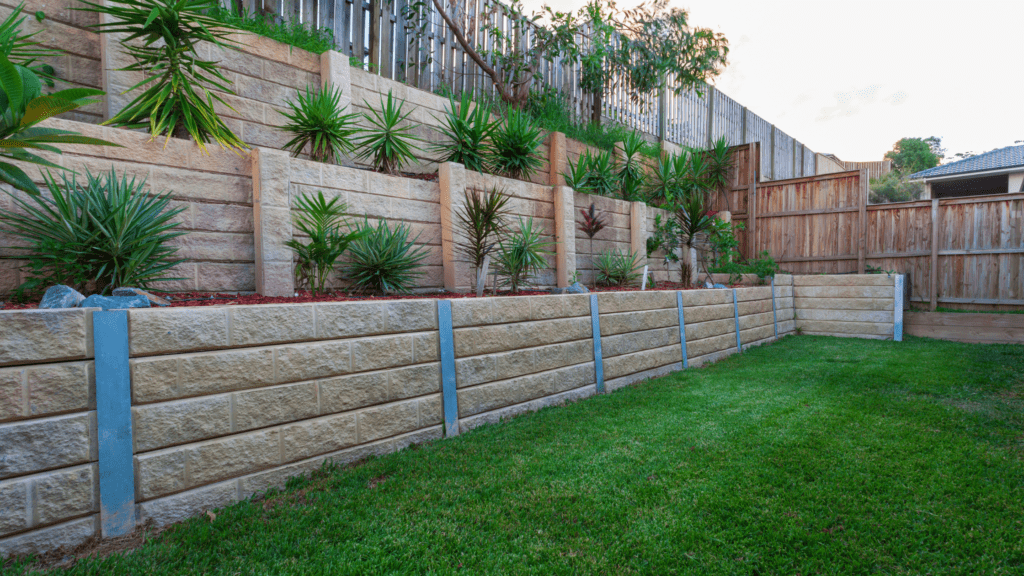Retaining Walls Can Help Prevent Foundation Repairs
Most people don’t know that there is a strong connection between your home’s foundation and the retaining wall found in your yard. Many homeowners think of retaining walls as nothing more than a decorative design that helps the appearance of sloping landscapes, add terracing, or for designing beautiful flower beds. Your cat might think it’s just a place to perch; however, much to your surprise, a retaining wall can also provide more than just those benefits. The retaining wall can help prevent foundation repairs.
What Is a Retaining Wall?
If done correctly, a retaining wall is an extraordinarily crafted system for the prevention of soil movement and for controlling water flow. Soil that might drain off or blow away over a period of time, can gain better protection with the simple addition of a retaining wall. Don’t think of a retaining wall as an eyesore, but more of a well-designed landscape that can offer much more to your home. Think of it as protection from having to do foundation repairs.
How Can a Retaining Wall Benefit My Foundation?
Your Houston home’s foundation is constantly affected by the soil underneath it, so protecting the soil is a key role in your foundation maintenance. Your Houston foundation is at risk when the soil under your home shifts, shrinks, swells or erodes. Any movement of soil below the foundation puts it at risk of shifting and cracking, especially in areas where the soil is prone to saturation, or the particles have less compaction, such as with sandy terrain.
Imagine you have a small box filled with soil. The sides of the box are holding the soil in place. Now imagine you set a large rock on top of the soil in the box. The rock represents the foundation of your home. If you didn’t have the sides of the box holding the soil in place, environmental factors including water, wind, and natural shifting would allow the soil to move freely. In turn, your rock would shift and become displaced. Think of a retaining wall like the sides of your box. They help to keep everything where it should be, regardless of mother nature’s forces.
Another great part of the retaining wall is that it will help flowing water move appropriately, which in return, will reduce the risk of soil erosion around your foundation. This simple addition will create more protection for your home’s foundation and is significantly less expensive than potential foundation repairs that might occur at a later date.
How Do I Know If I Need a Retaining Wall
The first step you need to take before you put in a retaining wall is to seek professional input. Because they have such a major role in controlling water flow and prevention of soil erosion, retaining walls can also affect other areas of your home, including your neighbors. The professionals will be able to survey the impact of water flow changes and help you to avoid any unanticipated problems. In addition, poorly constructed retaining walls will not offer the same benefits, so a professional’s opinion will help you select the proper materials and design for your particular situation.
Remember, retaining walls might not work in every area, but they may be a perfect option in some locations. You might consider a retaining wall if you live in a more sloping, uneven terrain, have sandy soil, or are more prone to soil erosions in your area.
Contact a professional to inspect the health of your foundation, and offer suggestions on how to assure it does not cause issues in the future.
**This blog post has been edited from its original post.

